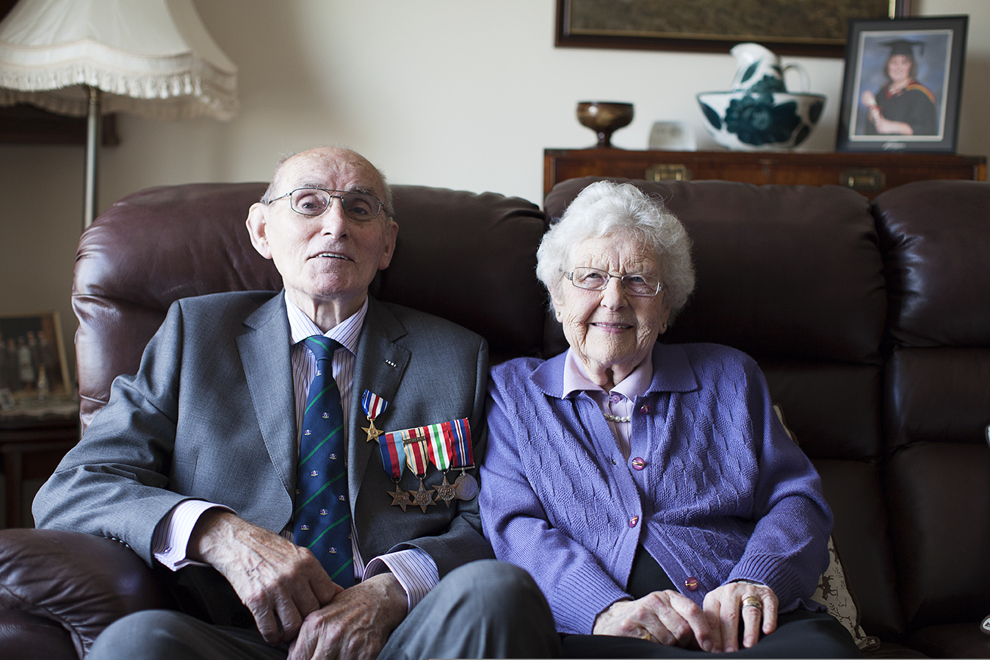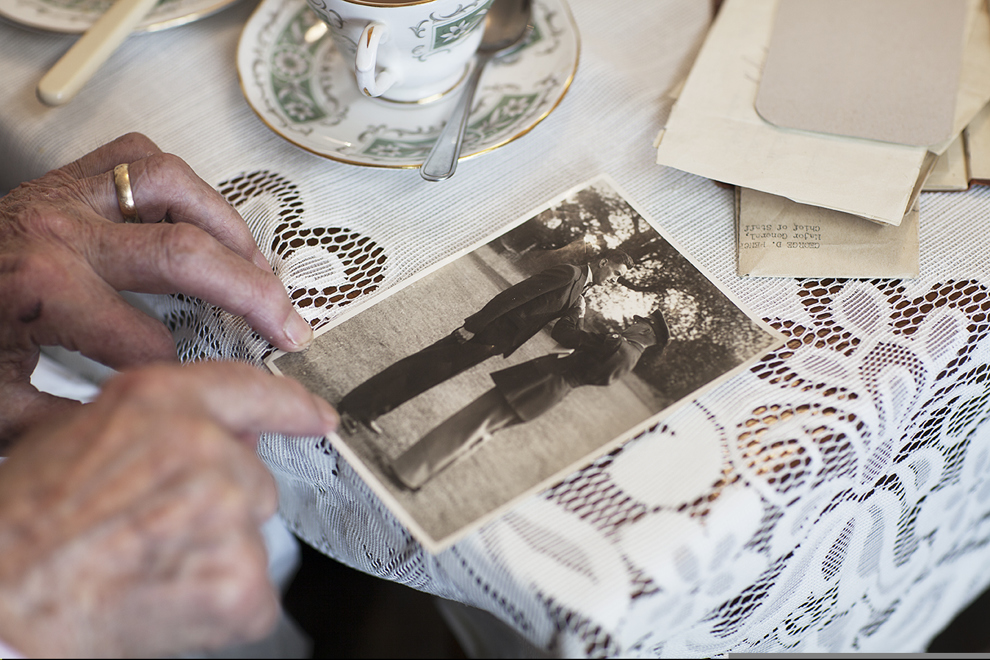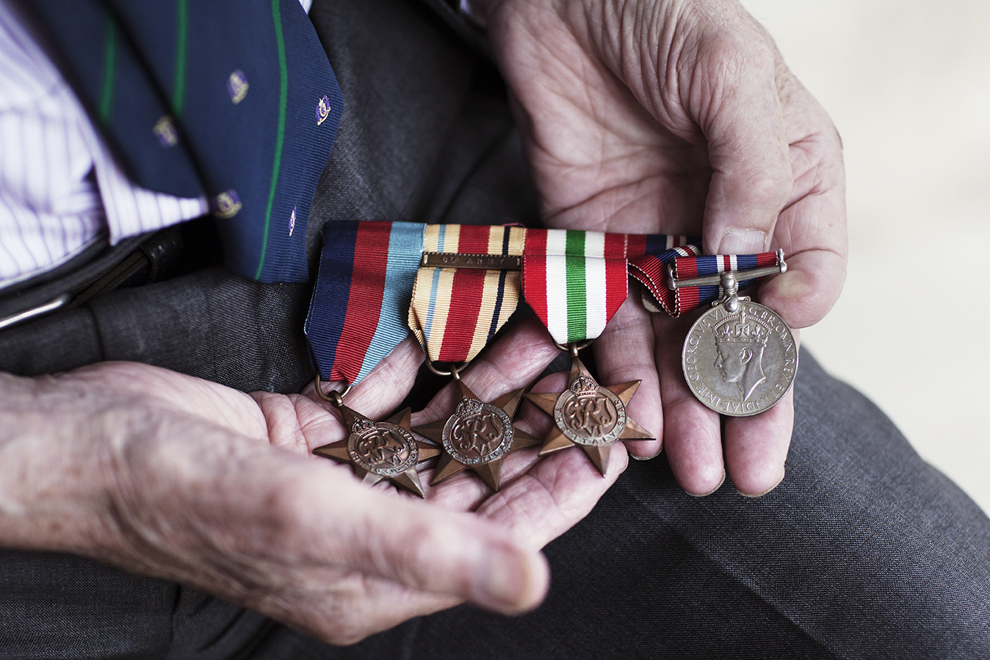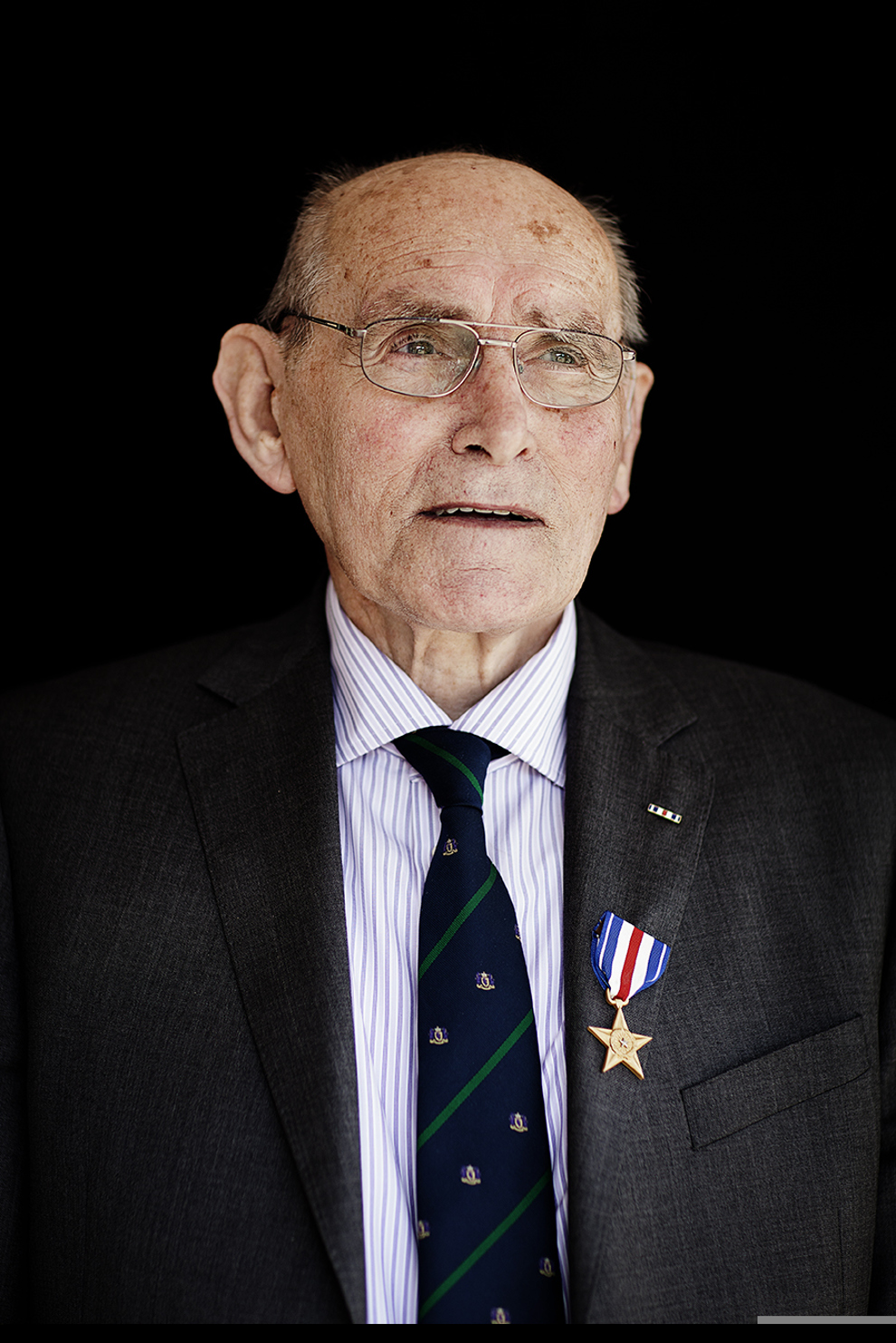Ken Gash was a trainee watchmaker before joining the Army at 19 when “that bloody fool Hitler started a rumpus.” His actions during WWII led to him becoming one of only a few Brits to win the American Silver Star...
Not many American soldiers are ever awarded the Silver Star, one of the USA’s highest military decorations for bravery. So to win one as a British soldier is something quite remarkable. But then, there is something extremely special about Kenneth Gash, whose heroics on Anzio Beachhead as a 21-year-old gunner in the Royal Tank Regiment led to him being decorated by a high-ranking US General in 1945.
His courageous and aggressive action was an important factor in repelling the German counterattack, and reflects the finest traditions of military service
THE PRESIDENT OF AMERICA

Now 92, and living in Gretna with his wife Win, it’s still possible to picture the tall, strong soldier who heroically took a machine gun from his broken-down tank while under heavy German fire. Ken then spent a day fighting alongside an American unit and shuttling between a nearby ditch and the armoured vehicle to get more ammunition, before finally being hit by a mortar.
Just as impressively, Ken has lived with multiple wounds for seven decades, all the while working hard, raising a family, and becoming an active Member of Blesma. Like many WWII soldiers, he is also extremely modest. His wife has to coax many of his stories out of him – “he doesn’t talk about it much, and doesn’t like to be seen as anything special,” says Win – but eventually, a fine picture of a true British action hero emerges.
“His courageous and aggressive action was an important factor in repelling the German counterattack, and reflects the finest traditions of military service,” runs the text on the commendation certificate awarded to Ken by the American government, and issued directly from the President. And that’s only half the story. We sat down with Ken to find out more...

Tell us about your early life...
I was born in Carlisle in 1922. I wasn’t very keen on school and I wanted to work. I started training as a watchmaker as soon as I could, but that bloody fool Hitler had other ideas, and started a rumpus! I joined the Royal Armoured Corps in February 1942. I was just 19 and driving all sorts of vehicles – motorcycles, fourteen-tonners, tanks... One day, on Salisbury Plain, I remember driving over a hill in a 30-tonne tank and it started slipping towards traffic on a nearby road. The people got out of the way soon enough, though!
When were you deployed to a conflict zone?
In August 1942. Our boat called in West Africa, then Durban. At first, it didn’t feel like we were at war. We were having a nice time. But then we went up to Port Suez, which was horrible. We stayed in billets full of bugs. Hitler thought that if he could get Egypt, he’d have control of North Africa – and then the Mediterranean. The Americans arrived in West Africa but they were learners and took big losses at El Alamein. We went to join them but we missed the fighting at Alamein, which was lucky because that was a hell of a do!
You started to edge towards Italy...
The 14 Battalion Royal Tank Regiment had been in Egypt, Libya and Tunisia up until May 1943. I came down with impetigo and had to go to hospital, but rejoined the guys in Tunisia. The Nazis came at us but we hammered them. Conditions were hot and tough – we rarely got a bath, for example – but we survived. In the Autumn, our tanks were waterproofed for landing in Italy, and we went to Anzio in January 1944. I remember my CO saying: “If any of you report sick with diarrhoea tomorrow, you’re on a charge!” But we were ready.
And one month later, you were injured...
Yes. So much of what happened in Italy was senseless. The Germans retreated to Normandy soon after, so many people died for nothing. They even killed the livestock as they withdrew. I remember we once came across a cow that they’d missed and a farmer in our battalion milked it, which was great! I was co-driving my tank when we became immobilised in full view of the enemy. We were taking heavy fire. My Commanding Officer ordered me to get out and join a friendly Infantry unit in a nearby ditch. I took a machine gun from the tank and manned it through the day, making some runs back to the tank to secure more ammunition and carry vital messages.
Tell us about when you were hit...
People never believe me but I was making tea! We had an urn that we heated up using diesel. I was making a cuppa when the mortar fire came in. I forgot to duck and was thrown up in the air. I got multiple injuries; I lost a finger, three toes and had numerous pieces of shrapnel embedded in me. I suffered from blast deafness and tinnitus, and ended up with thrombophlebitis [a circulatory problem] of my lower right leg.

Four minutes. Luckily, I’d been in the Scouts, and I knew to ask the Staff Sergeant to get a tourniquet on me; a major artery had been severed and I’d have bled out quickly otherwise. The next thing I knew, I was at a hospital near Mount Vesuvius. My mother got a couple of telegrams saying I was seriously ill and unlikely to make it. But I did. The hospital was interesting – children would bring us cigarettes and sing opera in the mornings, and in the next bed was a wonderful Sikh solider who made chapatis.
What was your rehabilitation like?
After 10 days I was evacuated to the Atlantis, a beautiful, brilliant-white hospital ship, and then on to hospital in Southport, Lancashire. My recovery was a slow process. Over the years, I’ve had lots of hospital visits to have shrapnel removed from my wrist, ankle, arms and chest. I’d lost a finger, so I couldn’t become a watchmaker. Instead, I went to work in a Maintenance Office, where I met my wife, Win. Then, for 20 years, I worked in the records department at the hospital in Carlisle. I played darts and bowls, we had three sons, and I joined Blesma.
What was Blesma like back then?
I really enjoyed it. I used to be a welfare officer and would travel around checking that Members were OK. Imet some great people. There was an 88 year old who used to take both legs off to do his gardening, and another chap, John Nixon, who went around on a moped with one leg – often carrying a leg of pork! My Blesma friends were real champs. They support me to this day. My BSO, Pete, is a marvellous man, and he’s just helped to get me a mobility scooter.
Finally – how did that Silver Star come about?
The Americans found out about my actions and a Colonel came over to award me with the medal. That was in 1945. There was a ceremony at Carlisle Castle, and the mayor came, it was all really nice.

We can help
We are dedicated to assisting serving and ex-Service men and women who have suffered life-changing limb loss or the use of a limb, an eye or sight. We support these men and women in their communities throughout the UK. Click the link below to find out the different kinds of support we offer.
Get Support
2 Comments
Brian Telford
CarlisleKatherine Hooper
WiltshireLeave a comment
Join fellow Members and supporters to exchange information, advice and tips. Before commenting please read our terms of use for commenting on articles.